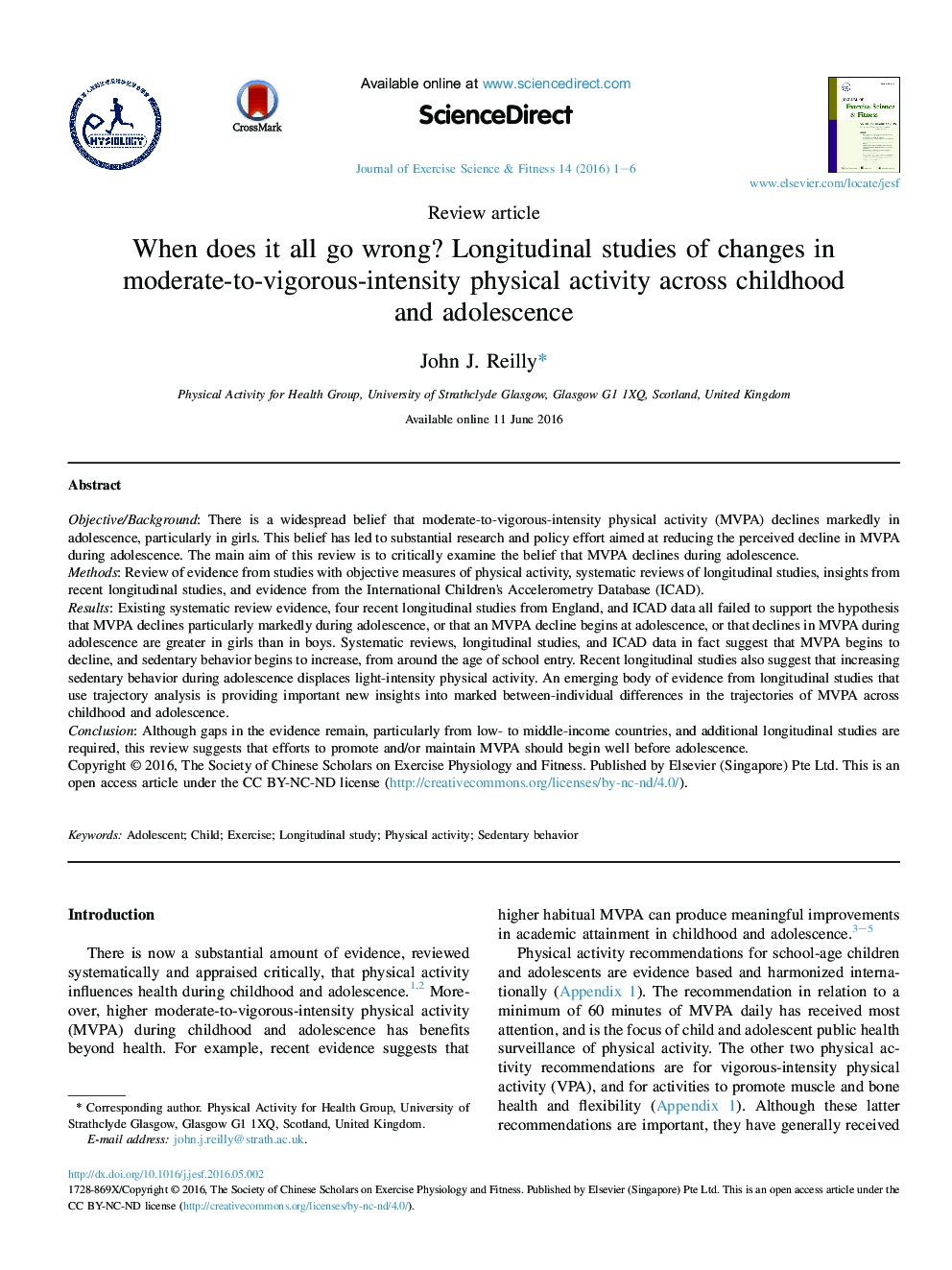| Article ID | Journal | Published Year | Pages | File Type |
|---|---|---|---|---|
| 2739589 | Journal of Exercise Science & Fitness | 2016 | 6 Pages |
Objective/BackgroundThere is a widespread belief that moderate-to-vigorous-intensity physical activity (MVPA) declines markedly in adolescence, particularly in girls. This belief has led to substantial research and policy effort aimed at reducing the perceived decline in MVPA during adolescence. The main aim of this review is to critically examine the belief that MVPA declines during adolescence.MethodsReview of evidence from studies with objective measures of physical activity, systematic reviews of longitudinal studies, insights from recent longitudinal studies, and evidence from the International Children's Accelerometry Database (ICAD).ResultsExisting systematic review evidence, four recent longitudinal studies from England, and ICAD data all failed to support the hypothesis that MVPA declines particularly markedly during adolescence, or that an MVPA decline begins at adolescence, or that declines in MVPA during adolescence are greater in girls than in boys. Systematic reviews, longitudinal studies, and ICAD data in fact suggest that MVPA begins to decline, and sedentary behavior begins to increase, from around the age of school entry. Recent longitudinal studies also suggest that increasing sedentary behavior during adolescence displaces light-intensity physical activity. An emerging body of evidence from longitudinal studies that use trajectory analysis is providing important new insights into marked between-individual differences in the trajectories of MVPA across childhood and adolescence.ConclusionAlthough gaps in the evidence remain, particularly from low- to middle-income countries, and additional longitudinal studies are required, this review suggests that efforts to promote and/or maintain MVPA should begin well before adolescence.
